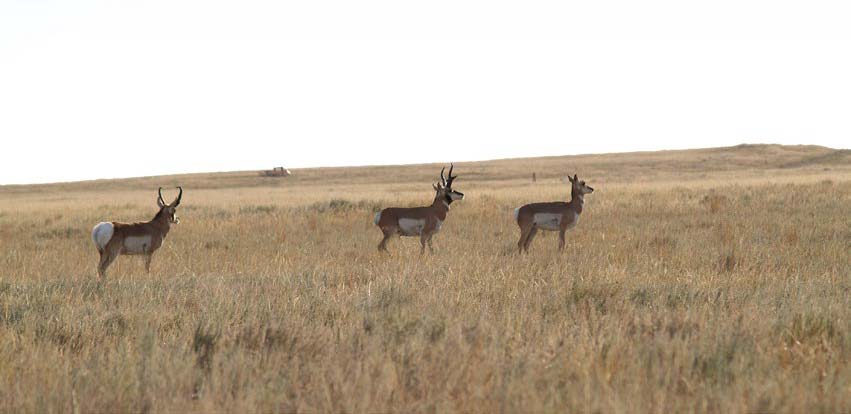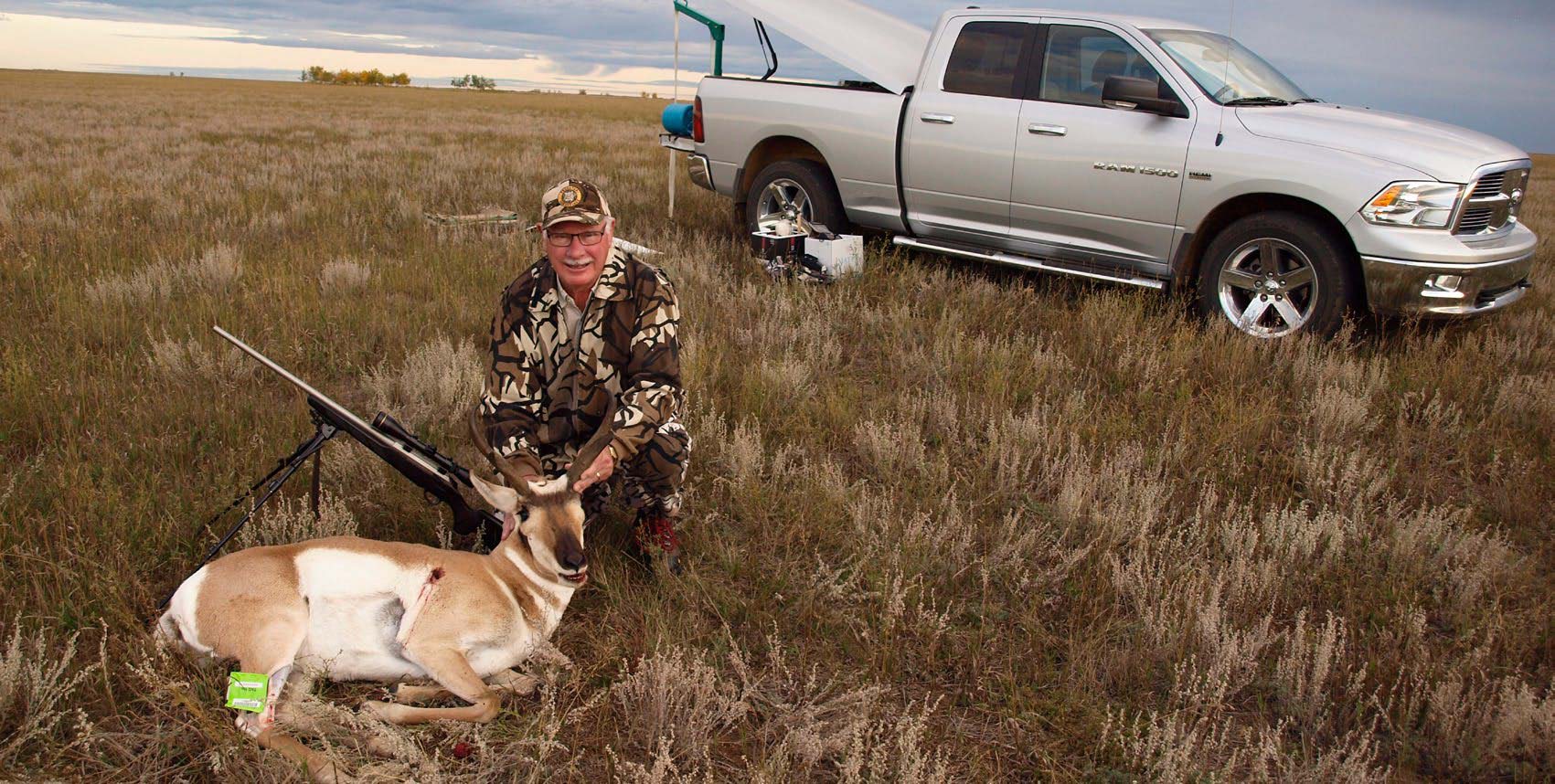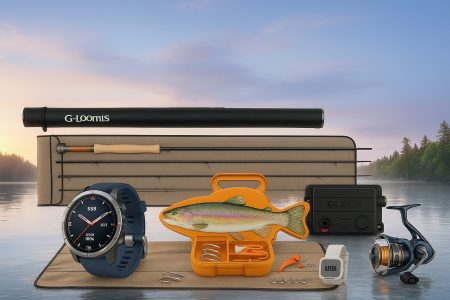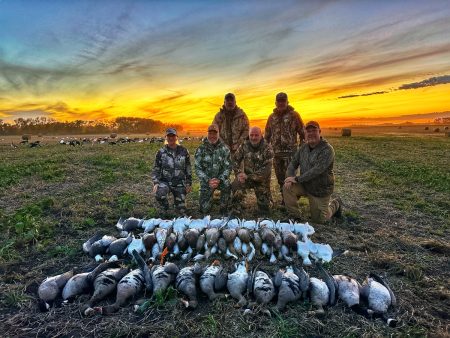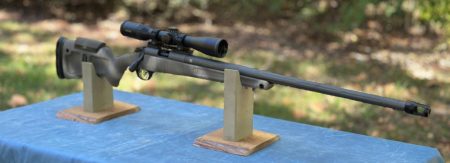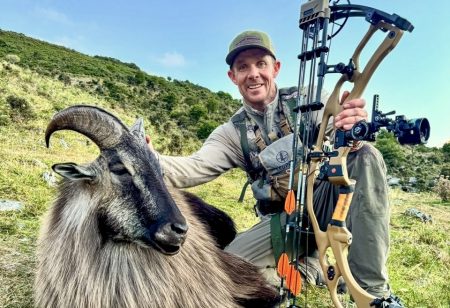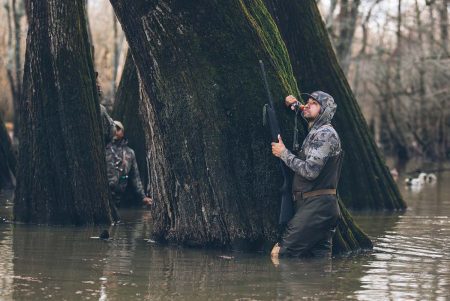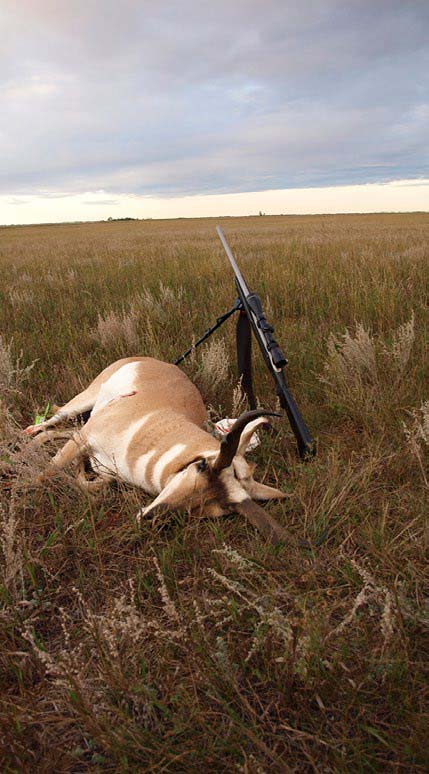 You can’t get up too early on an antelope hunt. Those hunters who are early risers often tag their quarry shortly after daybreak, validating my “First come, First Serve” mantra. That is, if they’ve practically put it to bed the night before; otherwise, all bets are off. However, to hedge their bets veteran antelope hunters also try to have a contingency plan just in case their first option doesn’t pan out successfully. My most recent successful hunt in 2019 re-enforced the value of being totally pro-active.
You can’t get up too early on an antelope hunt. Those hunters who are early risers often tag their quarry shortly after daybreak, validating my “First come, First Serve” mantra. That is, if they’ve practically put it to bed the night before; otherwise, all bets are off. However, to hedge their bets veteran antelope hunters also try to have a contingency plan just in case their first option doesn’t pan out successfully. My most recent successful hunt in 2019 re-enforced the value of being totally pro-active.
Even though I’ve enjoyed being on many antelope hunts in Alberta, I still find that it’s impossible to shake off associated anxieties. I’ve found that my apprehension has actually increased with more and more experience I have gained hunting these highly sought-after trophies. Why? I’ve found that if something can go wrong it will go wrong on an antelope hunt. On the other hand, usually, if you make a mistake, you’ll probably get a second chance. Plus, it’s getting more difficult for newbies to develop a level of expertise to hunt antelope because it’s taking more and more time to get drawn. Back in the 1970s and ‘80s I was getting a tag every few years, but it took 11 years to get drawn for my last tag, so maintaining a skill set is obviously becoming an issue. Prior to the Alberta’s priority system coming into place the draw was a lottery and I was often lucky to get tags but those days are history. Further, with no disrespect intended, ever since Alberta implemented an archery special licence for antelope these already jumpy animals have become even more wired by the time the rifle season opens. What’s even more remarkable is that the estimated success rate was 81 percent in 2010 – if hunters are being honest.
I’ve shot an antelope on eight of the 10 the hunts (1972, 1973, 1976, 1983, 1986, 1990, 1994, 2001, 2007, 2019) I’ve been on, passing on bucks during the two years I didn’t pull the trigger, looking for the ultimate trophy. I’ve taken a couple of bucks that fell just short of the minimum score for the Boone & Crockett Club Record Book so I can be a bit fussy. Now, however, with such a long wait time between draws I’m not as particular as I used to be.
I’ve found that you can’t spend too much time gearing up for an antelope hunt so it goes as smoothly as possible. Improving your chances of success hinge on planning and organization to minimize surprises while in the field, as I’ll describe in this article. I wear full body camouflage clothing. Antelope have excellent vision – somehow rated at 8 X – and the camo clothing will break your outline. They have large protruding eyes that are the largest of any North American ungulate which provide 300 degrees of vision and they can detect movement up to 4 miles away. They also have outstanding hearing – do not carry loose cartridges in your pocket, a dead giveaway that danger lurks nearby where sound carries great distances on the prairies. One of the key items I pack are 2-way radios that are vital for members of hunting parties to stay in contact with each other. I use 10×42 X binoculars and carry a 20X spotting scope with a window mount. I use a Quick Winch to hoist an antelope off the ground to skin it out after it has been field dressed. Antelope have hollow hair which is a great insulator. If the hide is not removed, especially when the ambient temperature exceeds 5-10 C, the meat can quickly spoil. I line a Jet Sled lined with a sheet of polypropylene plastic to keep the carcass clean, pack ice inside the body cavity and around the carcass, then cover it with a tarp to keep it cool on the way home. Some hunters use frozen water jugs for the same purpose. Pack enough water and paper towels to clean the body cavity and clean blood off your hands. Carry plastic garbage bags for waste material – don’t leave any litter. It’s generally best for parties hunting a long distance from home to limit themselves to one tag during a hunt, otherwise you’ll run into logistical issues dealing with downed antelope if other tags remain unfilled.
Accommodations can be hard to find in Alberta’s antelope country because there are relatively few hotels, motels or “bed & breakfasts” available. Book early or you likely will not find any accommodations, especially if construction (i.e., pipelines, highway paving) crews are working in the area. Likewise, there aren’t a lot of campsites. In Alberta, unless authorized by a Conservation Officer, it’s unlawful to dress, hang or store big game animals in a Provincial Park or Provincial Recreation Area. Service stations are also scarce in rural Alberta so check out your options before you leave home. There are occasional power outages in rural Alberta so top off your tank whenever you can to be on the safe side – gas pumps don’t work without power.
There’s an open season for antelope in late September in select Wildlife Management Units north of the South Saskatchewan River and one in late October south of the South Saskatchewan River. Temperatures can range from 0-25 C in September and October during the week-long seasons. If necessary, you have to be prepared to chill your antelope with ice or ice blocks, to prevent spoilage.
Wind is normal on Alberta’s prairies and it’s a rare day when conditions are perfectly calm. Antelope get edgy when it’s windy because wind affects their hearing, smell and vision. Wind makes them nervous. Typically, winds are generally calmest in the morning and evening, though, and antelope often appear like mushrooms before 10:00 am and after 3:00 pm that are the prime times to spot them.
Rain and snow are the nemesis of antelope hunters. They render side roads impossible to travel on, while travel on “main” roads can be a challenge even for 4×4 vehicles. Check the weather forecast and do not take any chances driving on back-country roads that are obviously wet or in poor driving condition. Help may be hours away if you get stuck. During my most recent antelope hunt, ~ inches of rain fell on a Wednesday before opening date and some side roads remained impassible up to 3-4 days afterwards.

Scouting is everything before the hunt starts. Those who do not scout ahead of opening date will be at a marked disadvantage. “Scouting” starts with the purchase of a County, Municipal “Road System and Ownership Maps” or Special Areas “Map Book” so you can identify landowners and contact them for permission to hunt on their land. These maps are available from local government offices and cost about $40.00. In some municipalities, landowners will not permit any vehicles on their land, period. If you shoot an antelope, you’ll have to get it back to your vehicle with a game carrier, in a Jet Sled or with a pack board – I once saw a hunter wrap an antelope in a plastic tarp to and drag it to a road. Most landowners are reasonable, however, and will let you use a vehicle to retrieve a downed antelope. The threat of prairie fires is a major issue and some years fire bans will be in effect, even during October hunts, with no travel whatsoever permitted off main roads.
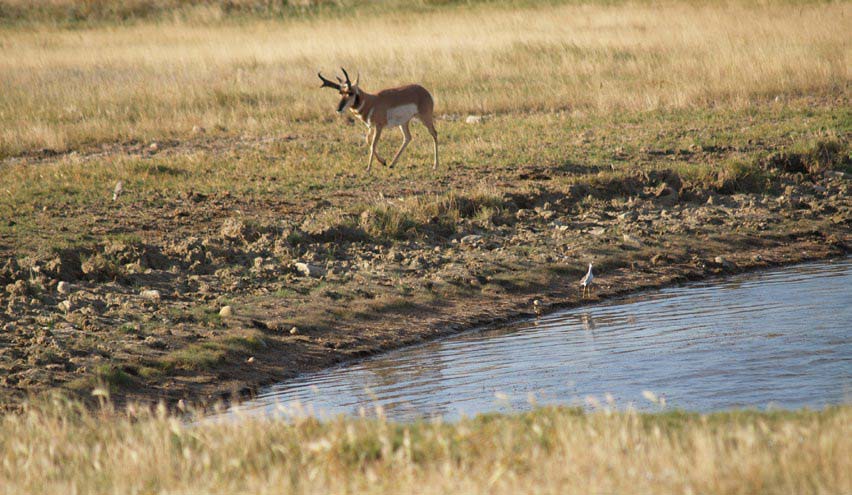
There are some important regulatory caveats that apply to hunting antelope in Alberta:
- It is unlawful to be within 50 yards of a vehicle when discharging a weapon at an antelope.
- A trophy antelope is a male antelope that has horns at least 5 inches in length.
- They must be tagged through the space between the bone and tendon of a hind leg.
- Evidence of sex and species must be retained on the same part of the animal to which the tag is affixed.
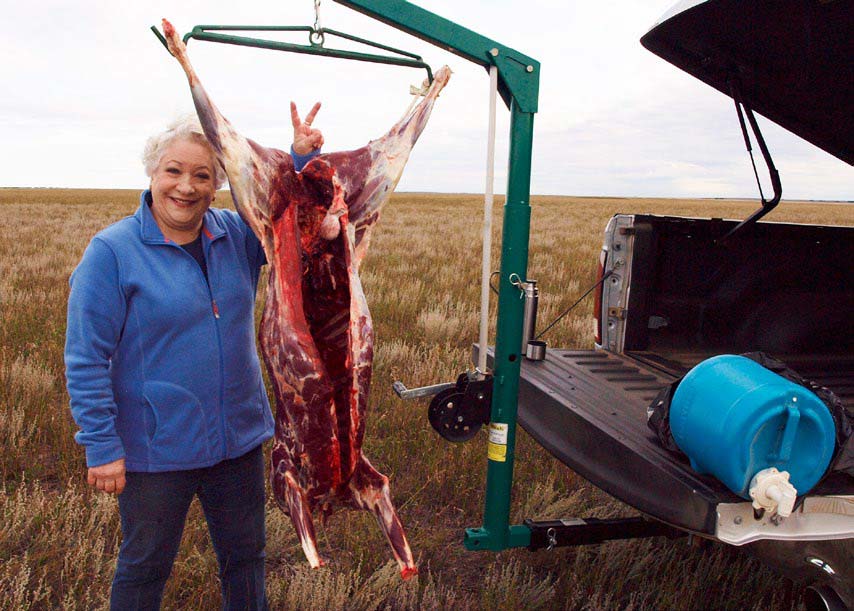
A flat shooting rifle is a bonus on an antelope hunt. Shots out to 300 yards are occasionally necessary. It goes without saying that you should use a bipod. I’ve always used a 270 Winchester with 130 grain bullets to hunt antelope. I sight in at 225 yards so I don’t have to worry about elevations out to this distance. It shoots ~3 inches high at 100 yards so it will be ~ 9 inches below dead centre at 300 yards, as there is a drop of 11.5 inches at this range. Hold on hair for your first shot. Don’t even think about taking a running shot unless you’re a marksman. Pronghorn antelope run up to about 60 miles per hour which would require a lead of ~9.5 feet at 100 yards using a 270 Winchester 130 grain bullet that would make for a very challenging shot. The chest height on a mature pronghorn buck is only about ~ 15 inches across, a bit smaller than a deer. Because of their small body size and white colouration the human eye will perceive antelope to be farther away than they actually are, so don’t be tempted to hold over their back on your first shot. A range finder takes the guess work out of estimating ranges.
Remember, careful planning and organization will go a long way to ensure a successful antelope hunt. Don’t scrimp on details. Give yourself enough time to locate and stalk these marvelous animals once in the field when the big day finally arrives!
By Duane Radford
Per our affiliate disclosure, we may earn revenue from the products available on this page. To learn more about how we test gear, click here.






